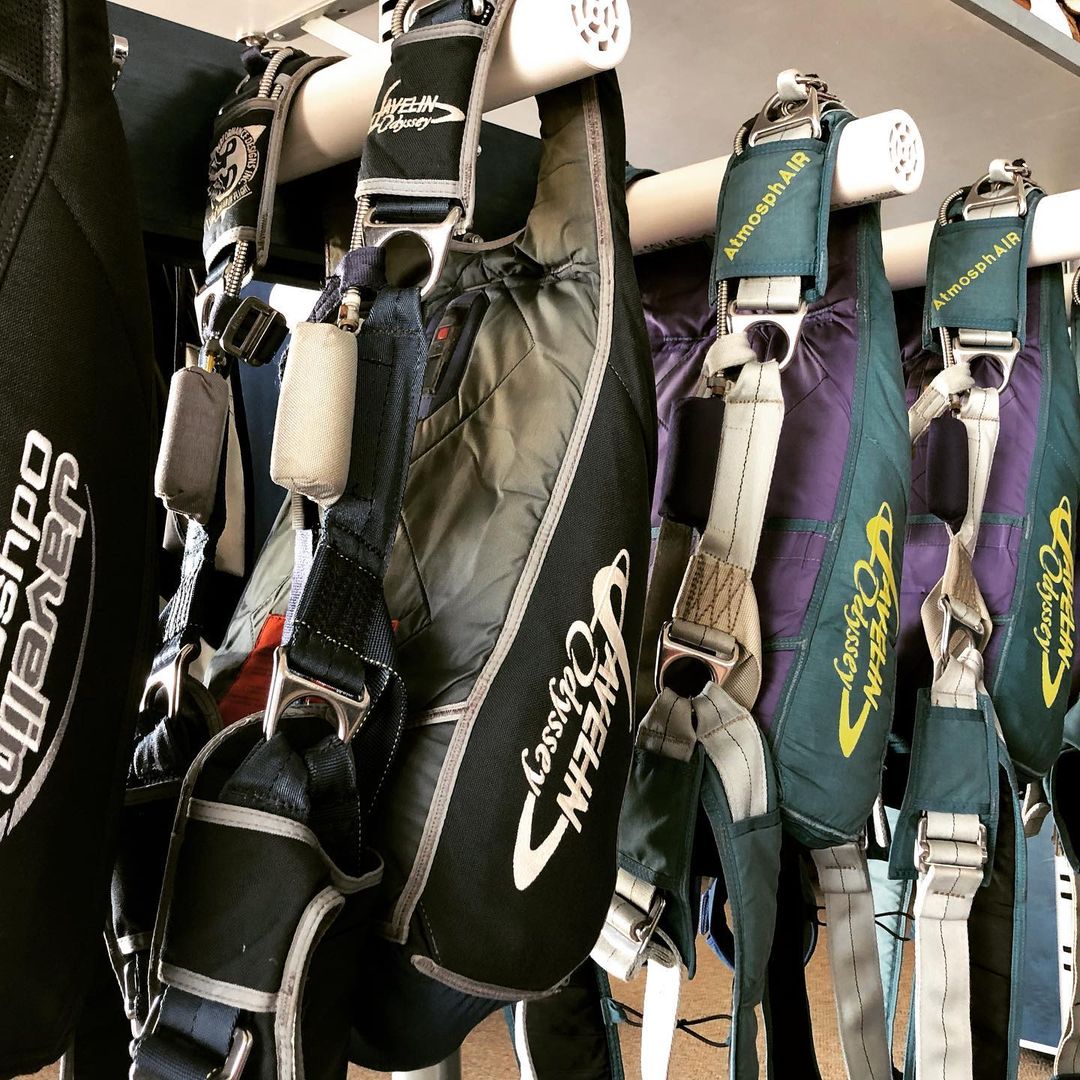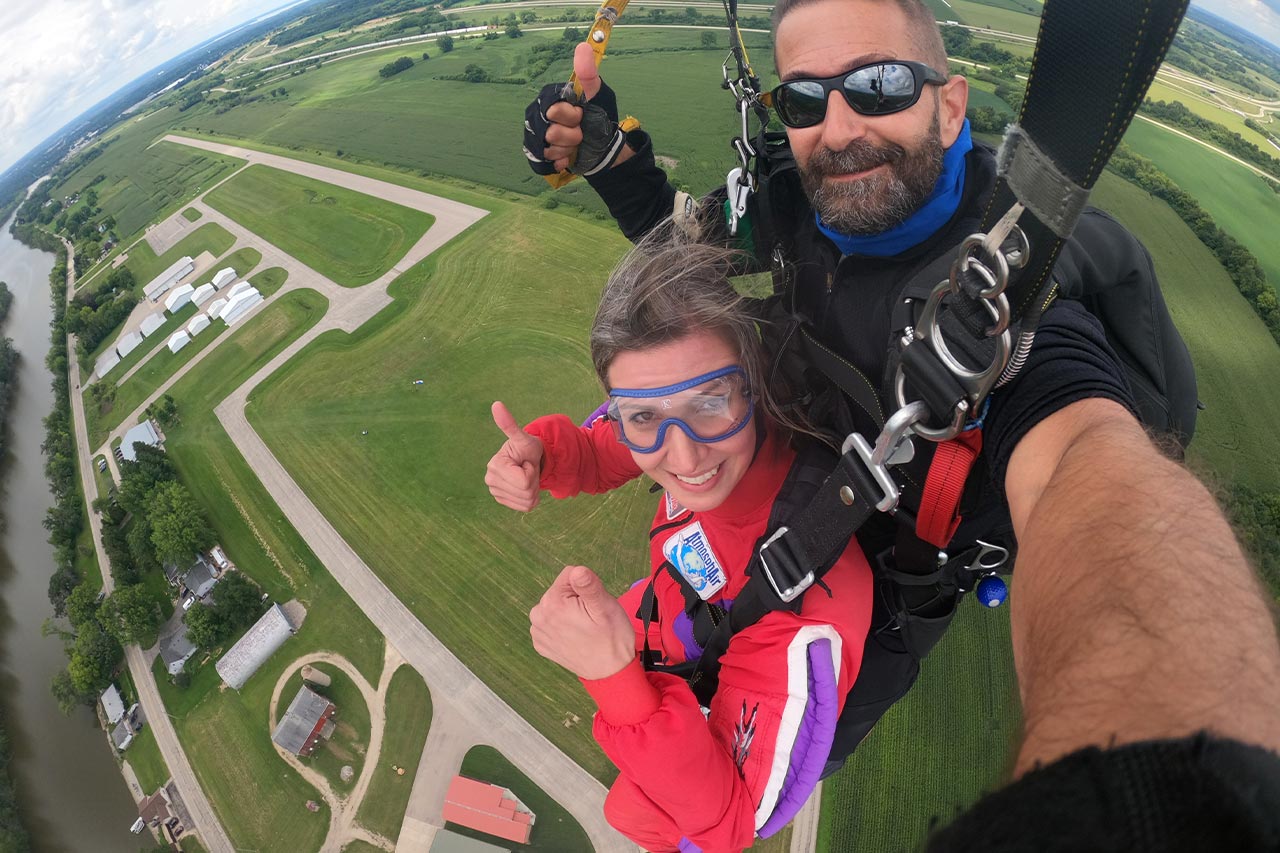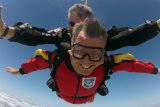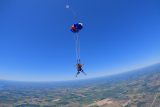Is Skydiving Safe? Stats, Equipment & Your First Time
Skydiving Safety
Posted by: Wisconsin Skydiving Center 10 months ago
If you’re considering making your first skydive, at least part of your brain is probably flashing DANGER DANGER DANGER in big red letters. But how dangerous is skydiving really? With the advancement of technology and training in skydiving, the sport has never been safer than it is today. Wisconsin Skydiving Center’s owner Bo Babovic is a living testament to this fact – he’s made over 17,000 skydivers!
How Safe is Skydiving?
Without further ado, let’s talk about the number one question on everyone’s mind – how safe is skydiving?
According to the United States Parachute Association’s safety records, statistics from 2022 show there were 20 fatal skydiving accidents out of an estimated 3.9 million jumps. To put these numbers into context, that translates to one fatality in 195,000 jumps (0.0051 in 1,000 skydives).
Not surprisingly, tandem skydiving has even better odds – you are securely strapped to a highly experienced, professional skydiving instructor. There has been one fatality for every 500,000 tandem jumps on average over the past 10 years (0.0002 in 1,000 tandem jumps). You are more likely to die as a result of a dog bite or bee sting than you are skydiving.
The USPA attributes these impressive and ever-improving statistics to strict safety standards, improvements to skydiving equipment over the years, and rigorous training programs, like USPA Safety Day, that take place annually.
Per the USPA, here are safety statistics for fatalities per total jumps between 2000 and 2022:
| Year (12 Months) | US Skydiving Fatalities | ~ Annual Jumps | Fatalities / 100K Jumps |
| 2022 | 20 | 3.9 million | 0.51 |
| 2021 | 10 | 3.57 million | 0.28 |
| 2020 | 11 | 2.8 million | 0.39 |
| 2019 | 15 | 3.3 million | 0.45 |
| 2018 | 13 | 3.3 million | 0.39 |
| 2017 | 24 | 3.2 million | 0.75 |
| 2016 | 21 | 3.2 million | 0.65 |
| 2015 | 21 | 3.5 million | 0.61 |
| 2014 | 24 | 3.2 million | 0.75 |
| 2013 | 24 | 3.2 million | 0.75 |
| 2012 | 19 | 3.1 million | 0.61 |
| 2011 | 25 | 3.1 million | 0.81 |
| 2010 | 21 | 3.0 million | 0.70 |
| 2009 | 16 | 3.0 million | 0.53 |
| 2008 | 30 | 2.6 million | 1.15 |
| 2007 | 18 | 2.5 million | 0.72 |
| 2006 | 21 | 2.5 million | 0.84 |
| 2005 | 27 | 2.6 million | 1.04 |
| 2004 | 21 | 2.6 million | 0.81 |
| 2003 | 25 | 2.6 million | 0.96 |
| 2002 | 33 | 2.6 million | 1.27 |
| 2001 | 35 | 2.6 million | 1.35 |
| 2000 | 32 | 2.7 million | 1.19 |
While these numbers look great, what they don’t explain is exactly how people are dying in the sport. For that information, we need to look a little closer than simple statistics.
You may be surprised to learn that the majority of skydiving deaths today involve seasoned, licensed skydivers – not newer, less experienced jumpers. The leading cause of skydiving fatalities is aggressive parachute or “canopy” flying.
It’s typical for many advanced skydivers to fly smaller, lightning-fast parachutes, which ups the risk quotient significantly. Today, it’s very rare for incidents to be due to gear malfunction and much more likely to be due to operator error.
Safety Equipment Used In Skydiving
Through the years, the development of technology in the sport has made skydiving significantly safer than the days when skydivers would daringly jump what was known as “gutter gear” – old military surplus parachute equipment! Today’s tech is on the cutting edge of research and development.

Here are a few safety features of the best modern skydiving equipment:
Reserve Parachutes – This isn’t so high-tech, but it’s important that you know that tandem students, those learning to skydive, and licensed skydivers always jump with a backup parachute, known as a reserve parachute. Deploying the reserve parachute can be done easily (but not SO easily that the reserve deploys on accident), and is something all skydivers train for consistently.
Automatic Activation Device – The automatic activation device, or AAD, has saved thousands of lives in the sport. This small computer system is installed in a skydiver’s container system (the backpack) and is designed to deploy the reserve parachute automatically if the main parachute hasn’t been deployed by a predetermined altitude.
For skydivers who have either lost altitude awareness, lost consciousness in freefall, or have had a medical event during freefall, the AAD has come to the rescue reliably. It’s the piece of equipment every skydiver hopes they never have to use, but it’s a great insurance policy to have during a skydive.
Audible Altimeters – New, audible altimeters help skydivers stay aware of their altitude during a skydive. These altimeters are designed to complement wrist or chest-mounted visual altimeters to ensure skydivers never lose track of where they are in the sky. Predetermined beeping signals let the skydiver know when they reach specific altitudes throughout the skydive.
Reserve Static Line – The reserve static line, or RSL, is designed to automatically deploy the reserve parachute as soon as the main parachute is cut away. During a cutaway sequence, a skydiver must cut away the main parachute by pulling on a cutaway handle before pulling the reserve handle. The RSL deploys the reserve the moment the main is released, often beating the skydiver to the reserve deployment handle!
Ram Air Parachutes – When many people think of parachutes, they often imagine them to be round (i.e. from the gutter gear days!). The modern technology of airfoil design has seen the round parachute become a thing of the past in recreational and sport skydiving. Generally, round parachutes are only used for military applications. Ram air parachutes are rectangular in shape, highly maneuverable, steerable, and stable. These parachutes are more like airplane or glider wings and, as a result, allow for greater control and accuracy during landings.
Skydiving Apps – Smartphone apps have even proven to be helpful with skydiving safety. Occasionally, a skydiver may land off the dropzone. If they jumped with their phone, they can use an app called Burble to alert dropzone of their location. They can even send a message declaring they are safe or in need of medical attention so the people coming to find them know how urgent the situation is! (Tandem students can’t jump with their phone, but don’t worry – your instructor has one.)
Is Skydiving Worth the Risk?

If you’re doing some research on the safety statistics of skydiving, it’s likely that you’re contemplating making your first jump – we applaud you for doing your homework! Now that you’ve looked at the data, you’ll need to consider whether the risk of making a skydive is worth taking. For many, the stats show skydiving to be an acceptable risk, but it would be worth also considering the reward.
Skydiving is so much more than an adrenaline experience; for many, skydiving is like therapy. The media tends to highlight skydiving as an adrenaline-seeking experience (and it is), but there is far more happening below (or above) the surface.
When skydiving, the brain produces endorphins, serotonin, and dopamine – all-natural chemicals that many doctors prescribe to help reduce stress and anxiety. The problem with these prescriptions is they can be addictive and also lose their level of effectiveness over time. But when they are produced naturally, like by jumping out of an airplane, it’s not addictive or short-lived at all! Well, not addictive in the same way …
Skydiving literally produces a natural high or euphoric feeling that feels so, so good! Ask anyone who has jumped and they’ll share that it’s one of the best experiences of their life because of how it makes you feel.
Making Your First Skydive
If you’ve decided that you’d like to make a skydive – great! We think the experience will exceed your expectations! Your starting point is a tandem skydive. A tandem skydive will allow you to jump with a professional skydiving instructor who has at least 500 jumps (the minimum requirement to become a tandem instructor). A tandem skydive is the most popular form of skydiving, as it requires minimal training – usually between 45 minutes to an hour – before you’re ready to head up to altitude!
There are a few requirements that dictate who can make a skydive, even as a tandem:
- Must be at least 18 years of age
- Cannot weigh more than 260 lbs
- Must have a valid, government-issued photo ID
- Be in good health
Click here for a more detailed look at how to prepare for your first skydive!
Are You Ready to Skydive?
We hope this article has helped answer all of your questions relating to the safety of skydiving! Should you have any questions, please get in touch – we’d love to answer them for you. And when you’re ready for the best skydiving experience in the Midwest, book a skydive with Wisconsin Skydiving Center! Blue skies!
Categories:
You May Be Interested In:

What’s a Skydiving AAD & Why It Matters
7 months ago by Wisconsin Skydiving Center

How Much Experience Do Skydiving Instructors Have?
8 months ago by Wisconsin Skydiving Center

Do Skydivers Have Backup Parachutes?
10 months ago by Wisconsin Skydiving Center

Complete Guide to Skydiving Gear & Equipment
11 months ago by Wisconsin Skydiving Center